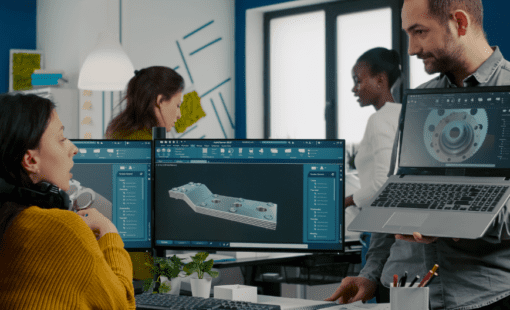Modelling complex systems
SysML (Systems Modelling Language) is a graphical modelling language designed to support systems engineering activities. It extends the capabilities of the software development focus Unified Modeling Language (UML) to meet the broader needs of systems engineers. SysML enables the modeling of complex systems that incorporate hardware, software, data, processes, and personnel, making it an essential tool in the field of systems engineering.
Purpose-Built for Systems Engineering
Unlike UML, which primarily focuses on software systems, SysML caters to a broader spectrum of needs. It addresses system requirements, structures, behaviors, and validations, providing a comprehensive framework for modelling complex systems.
SysML (Systems Modeling Language) serves as a comprehensive framework to capture various aspects of a system effectively, integrating critical facets of system engineering:
- Requirements Management: SysML establishes explicit links between system requirements and design elements. This ensures traceability and alignment between what the system must do and how it is realized in the design.
- Behavior Representation: It supports dynamic behavior representation through activity diagrams, sequence diagrams, and state machine diagrams, providing a clear understanding of how the system operates in different scenarios.
- Structural Depiction: SysML enables visualization of physical and logical structures via block definition diagrams (BDD) and internal block diagrams (IBD). This clarifies the system’s architecture, its components, and their interconnections.
- Parametric Constraints and Relationships: SysML provides the ability to represent constraints and relationships within a system, enabling in-depth technical analysis to validate important aspects such as performance, safety, and compliance.
The relationships between these different views can be visualized through diagrams that ensure requirements traceability, depict dynamic behaviors, represent structural architecture, and validate parametric constraints to providea cohesive understanding of the system’s design and performance.
SysML plays a critical role in MBSE
SysML plays a critical role in MBSE by enabling the creation of unified models that support the entire lifecycle of a system. These models serve as a consistent framework for communication across interdisciplinary teams, ensuring alignment and collaboration.
Zuken’s MBSE software GENESYS supports and extends SysML by incorporating its standard elements, such as requirements diagrams, structure diagrams, behavior diagrams, and parametric diagrams.
While SysML provides a standardized language for system modelling, GENESYS enhances this framework with features such as rule-based validation to ensure logical consistency, dynamic views that automatically update to align with the central model repository, and comprehensive traceability across requirements, functions, behaviors, and components.
GENESYS: Extending SysML with a natural language metamodel
GENESYS emphasizes natural language semantics to enhance accessibility and facilitate clearer communication among stakeholders, enabling the modeling and understanding of complex systems beyond the limitations of SysML’s formal notation.
Additionally, GENESYS integrates seamlessly with other tools and frameworks, offering advanced capabilities like executable models, impact analysis, and compatibility with domain-specific tools such as DOORS and MATLAB, creating a more comprehensive and flexible modeling environment.
Conclusion
In summary, SysML plays a critical role in MBSE by enabling the creation of unified models that support the entire lifecycle of a system. The GENESYS metamodel extends and enhances SysML, building upon its principles to offer a wider array of capabilities, particularly for Model-Based Systems Engineering (MBSE). This approach supports more robust, integrated, and semantically rich modeling of complex systems.
For further information about Systems Engineering and Modelling, click on the link below






